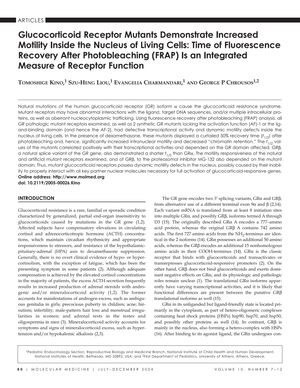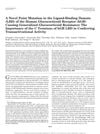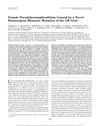Glucocorticoid Receptor Mutants Demonstrate Increased Motility Inside the Nucleus of Living Cells: Time of Fluorescence Recovery After Photobleaching Is an Integrated Measure of Receptor Function
July 2004
in “
Molecular Medicine
”

TLDR Certain defective glucocorticoid receptor mutants move faster inside cell nuclei and work less effectively.
The study from 2004 examined the nuclear motility of various glucocorticoid receptor (GR) mutants in living cells using fluorescence recovery after photobleaching (FRAP). It was discovered that pathological GR mutants and synthetic mutants with missing activation functions exhibited both defective transcriptional activity and increased nuclear motility, as evidenced by reduced 50% recovery times (t1/2) after photobleaching. This increased motility was linked to decreased chromatin retention. The t1/2 values positively correlated with transcriptional activities and were influenced by the specific GR domain affected. The natural splice variant GRβ also displayed increased motility compared to GRα. The study also explored the role of the proteasome pathway in GR motility, finding that the proteasome inhibitor MG-132 affected the motility of GR mutants differently, depending on the affected domain. The number of cells analyzed for FRAP ranged from 12 to 20. These results suggest that increased motility of mutant GRs in the nucleus is indicative of their impaired function, likely due to improper interactions with nuclear components essential for activating glucocorticoid-responsive genes.


